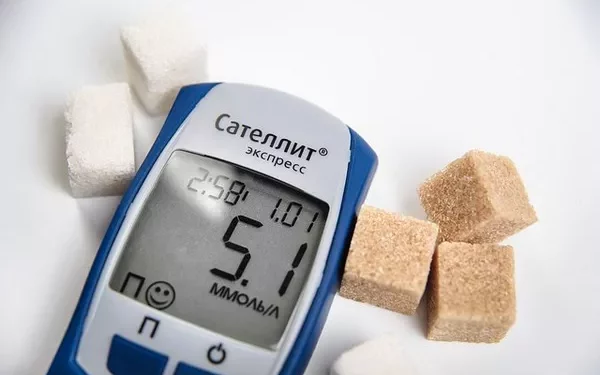Maintaining optimal glucose levels is essential for managing diabetes and preventing complications. Glucose readings are critical markers used by healthcare providers and individuals to monitor blood sugar levels. But what exactly is the best glucose reading? This comprehensive guide will explore the ideal glucose ranges for different populations, how glucose levels are measured, and why achieving stable readings is crucial for long-term health.
Understanding Glucose Levels
Glucose, a type of sugar, is the body’s primary source of energy. When you eat, carbohydrates in food are broken down into glucose, which is absorbed into the bloodstream. Insulin, a hormone produced by the pancreas, helps move glucose into the cells, where it is used for energy. For people with diabetes, this process is disrupted, leading to fluctuations in blood glucose levels.
What Are Normal Glucose Levels?
Blood glucose levels are measured in milligrams per deciliter (mg/dL) or millimoles per liter (mmol/L), depending on the region. Normal glucose levels can vary depending on factors like time of day, whether you’ve eaten, and your activity levels. For a healthy individual without diabetes, the typical ranges are:
Fasting Blood Glucose (Before Eating): 70-99 mg/dL (3.9-5.5 mmol/L)
Postprandial Blood Glucose (Two Hours After Eating): Less than 140 mg/dL (7.8 mmol/L)
Random Blood Glucose (At Any Time of the Day): Less than 200 mg/dL (11.1 mmol/L)
For people without diabetes, these ranges help maintain proper glucose control and prevent conditions like hypoglycemia (low blood sugar) or hyperglycemia (high blood sugar).
What Is the Best Glucose Reading for Diabetics?
For individuals with diabetes, the optimal glucose levels are slightly different. Managing diabetes involves balancing blood glucose within target ranges to avoid complications. The American Diabetes Association (ADA) recommends the following target ranges:
Fasting Blood Glucose (Before Eating): 80-130 mg/dL (4.4-7.2 mmol/L)
Postprandial Blood Glucose (Two Hours After Eating): Less than 180 mg/dL (10.0 mmol/L)
HbA1c (Long-Term Measure of Blood Sugar Control): Less than 7.0% for most adults
These ranges may vary based on age, overall health, and other individual factors. It’s essential for diabetics to work closely with their healthcare provider to determine personalized target ranges.
Why Is Monitoring Blood Glucose Important?
Keeping blood glucose within target ranges is essential for preventing both short-term and long-term complications of diabetes.
Short-Term Complications:
Hypoglycemia: Blood glucose that falls below 70 mg/dL can lead to symptoms like shakiness, confusion, sweating, and fainting. Severe hypoglycemia can result in unconsciousness or seizures.
Hyperglycemia: Blood glucose levels above 180 mg/dL can cause symptoms like frequent urination, excessive thirst, and fatigue. Left untreated, hyperglycemia can lead to diabetic ketoacidosis (DKA) or hyperosmolar hyperglycemic state (HHS), both of which are life-threatening conditions.
Long-Term Complications:
Cardiovascular Disease: Chronic high blood sugar can damage blood vessels and increase the risk of heart attacks and strokes.
Kidney Damage (Nephropathy): High glucose levels can impair kidney function, potentially leading to kidney failure.
Nerve Damage (Neuropathy): Nerve damage due to poor glucose control can cause pain, tingling, or numbness, especially in the feet.
Eye Damage (Retinopathy): Uncontrolled glucose levels can harm the blood vessels in the eyes, leading to vision loss or blindness.
Monitoring glucose levels regularly and achieving stable readings can significantly reduce the risk of these complications.
How to Measure Blood Glucose Levels
There are several methods used to monitor blood glucose:
1. Self-Monitoring Blood Glucose (SMBG)
SMBG is the most common way for individuals with diabetes to check their blood sugar at home using a glucometer. Here’s how it works:
- A small drop of blood is collected from the finger using a lancet.
- The blood is placed on a test strip inserted into a glucometer.
- The glucometer provides a reading of the blood glucose level in a matter of seconds.
This method is typically recommended for people with diabetes, especially those on insulin therapy, as it provides immediate feedback on glucose levels.
2. Continuous Glucose Monitoring (CGM)
A CGM device consists of a small sensor inserted under the skin that continuously measures glucose levels in the interstitial fluid. This method provides real-time glucose data and can alert users to impending highs or lows, making it easier to achieve optimal glucose control.
3. Hemoglobin A1c (HbA1c) Test
The HbA1c test measures the average blood glucose levels over the past two to three months. It provides a longer-term view of blood sugar control. A normal HbA1c level is below 5.7%, while a target for people with diabetes is typically below 7%.
Factors That Influence Glucose Levels
Blood glucose levels can be influenced by several factors, including:
Diet: Carbohydrates, in particular, have the most significant impact on blood sugar. Eating high-glycemic-index foods can cause spikes in glucose levels, while low-glycemic-index foods help maintain more stable readings.
Exercise: Physical activity can lower blood glucose levels as muscles use glucose for energy. However, intense or prolonged exercise can cause blood sugar to drop too low, especially for individuals on insulin.
Medications: Insulin and oral diabetes medications are used to manage blood sugar levels, but incorrect dosing or missed doses can lead to fluctuations.
Stress: Stress hormones, like cortisol, can raise blood sugar levels. Managing stress through relaxation techniques or physical activity can help stabilize glucose.
Illness: Infections or other illnesses can cause blood sugar to rise. It’s essential to monitor glucose levels closely when sick and adjust medication as needed.
Sleep: Poor sleep or irregular sleep patterns can affect insulin sensitivity and glucose metabolism, potentially leading to higher blood sugar levels.
Tips for Achieving Optimal Glucose Levels
Maintaining the best glucose readings requires a comprehensive approach to diabetes management. Here are some tips to help you achieve stable blood sugar levels:
1. Follow a Diabetes-Friendly Diet
- Focus on low-glycemic-index foods like vegetables, whole grains, and legumes.
- Avoid sugary snacks and processed foods that can cause rapid blood sugar spikes.
- Eat balanced meals with a good mix of carbohydrates, proteins, and healthy fats to prevent post-meal blood sugar surges.
2. Exercise Regularly
- Engage in moderate physical activity, such as walking, swimming, or cycling, for at least 150 minutes per week.
- Monitor your blood sugar before and after exercise to avoid hypoglycemia.
- Include resistance training to improve insulin sensitivity and overall glucose control.
3. Monitor Blood Sugar Regularly
- Check your blood sugar levels as recommended by your healthcare provider. Monitoring frequently can help you adjust your diet, activity level, and medications as needed.
- Use a CGM if prescribed, to keep track of glucose trends in real-time.
4. Take Medications as Prescribed
- Follow your prescribed medication regimen. If you’re on insulin, make sure to take it at the right time and dose.
- Work with your healthcare team to adjust medications based on your glucose readings.
5. Manage Stress
- Practice stress-reduction techniques such as meditation, deep breathing, or yoga.
- Regular physical activity can also help lower stress and stabilize glucose levels.
6. Get Adequate Sleep
- Aim for 7-9 hours of quality sleep per night. Good sleep helps regulate hormones and keeps blood sugar stable.
- Avoid caffeine or heavy meals before bedtime to improve sleep quality.
What If My Glucose Readings Are Outside the Target Range?
It’s common for glucose levels to fluctuate, but consistently high or low readings need to be addressed. Here’s what you can do:
High Glucose Readings (Hyperglycemia)
Causes: Missing medications, eating high-carbohydrate meals, stress, or illness.
What to Do: Take your prescribed medication, drink plenty of water, and engage in light physical activity to help lower blood sugar levels. Contact your healthcare provider if high readings persist.
Low Glucose Readings (Hypoglycemia)
Causes: Too much insulin, skipping meals, or intense physical activity.
What to Do: Consume 15-20 grams of fast-acting carbohydrates, like glucose tablets, juice, or candy. Recheck your blood sugar after 15 minutes and repeat if necessary.
See also: What is the Average Person’s Blood Sugar Level?
Conclusion
The best glucose readings depend on individual factors such as health conditions, age, and lifestyle. For individuals with diabetes, maintaining blood glucose levels within target ranges is essential for preventing both short-term complications like hypoglycemia and long-term damage to the heart, kidneys, and nerves.
By understanding your glucose readings, monitoring regularly, and making lifestyle adjustments, you can manage your blood sugar effectively and lead a healthier life. Always work with your healthcare provider to determine the best glucose targets and management strategies tailored to your needs.
Related topics:
How is Blood Sugar Measured in Blood Tests?

























